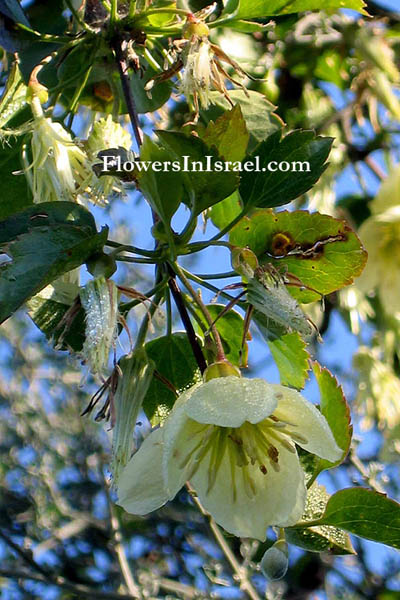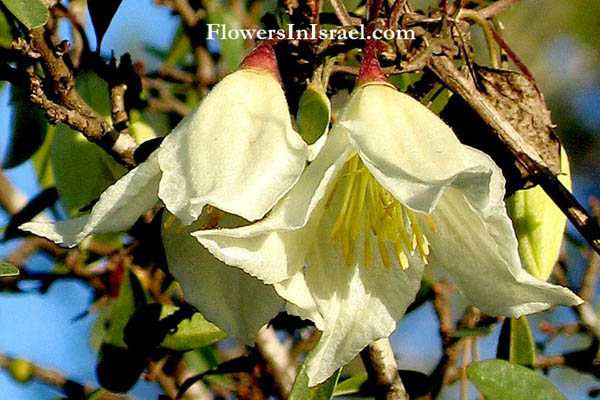Clematis cirrhosa, Fern-leaved clematis, Evergreen clematis,
Evergreen Traveller's Joy, Bower,
Hebrew: זלזלת הקנוקנות, Arabic: حبل مسكي
|
|
| Scientific name: |
| Clematis cirrhosa L. |
| Common name: |
| Fern-leaved clematis, Evergreen clematis, Evergreen Traveller's Joy, Bower |
| Hebrew name: |
| זלזלת הקנוקנות |
| Arabic name: |
| حبل مسكي |
| Plant Family: |
| Ranunculaceae, נוריתיים |
|
|
| Life form: |
| Phanerophyte, shrub |
| Stems: |
| Prostrate, climbing, tendrils; branched, hirsute |
| Leaves: |
| Opposite, entire, dentate or serrate |
| Flowers: |
| Cream, white |
| Fruits / pods: |
| Dry indehiscent fruits, achene |
| Flowering Period: |
| January, February, November, December |
| Habitat: |
| Mediterranean maquis and forest |
| Distribution: |
| Mediterranean Woodlands and Shrublands, Montane vegetation of Mt. Hermon |
| Chorotype: |
| Mediterranean |
| Summer shedding: |
| Perennating |

Derivation of the botanical name:
Clematis, clema, Κλημα (Greek), "vine; branch"; atis, -ατιϛ, substantive suffix for nouns: diminutive; climbing plants.
Cirrhosa, cirrhus, cirrus, "curl, ringlet, tuft of hair, tendril"; osus, adjective suffix for nouns: plenitude or notable development; with lots of tendrils, curls.
- The standard author abbreviation L. is used to indicate Carl Linnaeus (1707 – 1778), a Swedish botanist, physician, and zoologist, the father of modern taxonomy.
Clematis cirrhosa is native to the Mediterranean region of southern Europe and northern Africa. Its flowers are nodding, cup-shaped, borne singly or in clusters. It is one of two evergreen Clematis species (the other is C. armandii).
- Theophrastus (370 BCE — ca. 285 BCE), Enquiry into plants, V.ix.6, gives the name of atrhragene to the plant, and according to Sprengel (Kurt Polycarp Joachim, 1766-1833), the athragene is the Clematis cirrhosa of Linnaeus, the French Clématite à vrilles.
-
The Herbal of Dioscorides the Greek (ca.40-ca.90 CE): Klematis Etera - (suggested: Clematis cirrhosa — Evergreen Clematis; Clematis angustifolia —Virgin's Bower; Clematis alpina — Alpine Clematis) poisonous
There is another clematis which sends out a vinelike
branch, reddish, flexible; the leaf extremely sharp to
the taste and ulcerating. It winds around trees like smilax. The seed of this (pounded into small pieces
and taken as a drink with water or honey water) drives
phlegm and bile downward. The leaves (applied as a
poultice) drive away leprosy. They are preserved with
lepidium [2-205] to eat with meat [vegetable]. It is also
called epigetis, the Egyptians call it phylacuum, and the
Romans, ambuxus.
See the list of Medicinal herbs in Israel, the parts used and their medical uses to treat various diseases.


|



